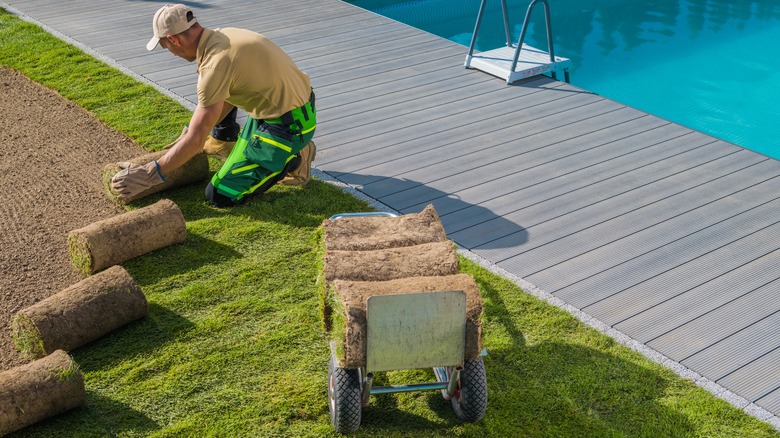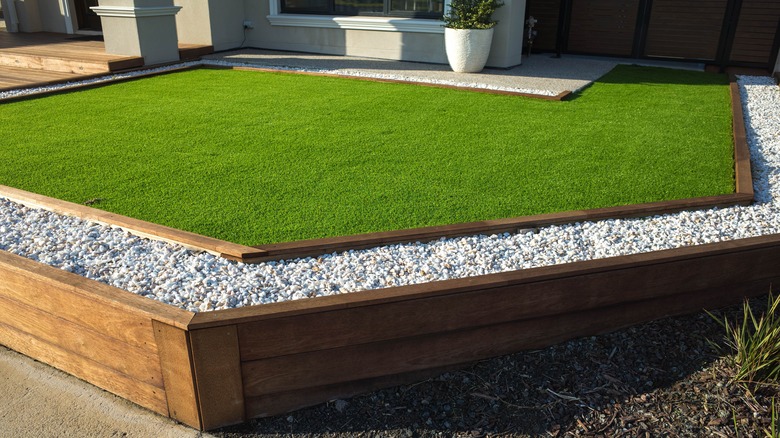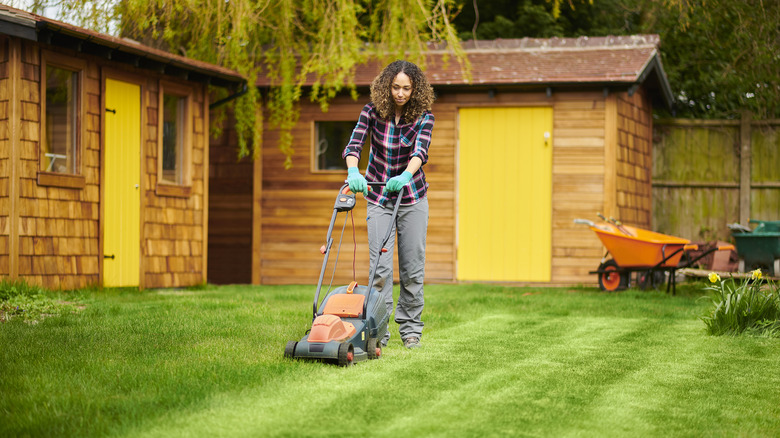Synthetic Turf Vs Natural Grass: Which Is Better For Your Lawn?
When choosing between synthetic turf and natural grass, there are different factors to consider. Think about the level of impact you expect the lawn to get, like a lot of foot traffic or outdoor games, and think about your region's climate. Consider your budget for installation, but also how much money and time you're willing to devote to ongoing maintenance. Environmental impact is another factor, and you might want the more sustainable option. Grass is good for a natural aesthetic but it needs more upkeep to maintain its appearance. Synthetic turf, on the other hand, is good in harsh climates. Since it works in most environments and is more low maintenance in comparison, artificial turf may be better for your lawn. However, it can come with a bigger price tag at first.
Ultimately, the two types of turf are grown very differently. Natural turf consists of live grass that depends on the soil and water for its growth and health, while synthetic turf is made from various artificial materials. It typically consists of a base layer, backing, infill, and then fibers that make up the grass part. These different compositions lead to different pros and cons to consider.
Synthetic or artificial turf
Probably the top selling point of artificial grass is its low maintenance, durability, and consistent appearance over time. You can depend on it to maintain its color and shine, and it doesn't need mowing, watering, or fertilizing. Infill is added to support and stabilize artificial grass and then the whole turf is treated with UV stabilizers to prevent fading and damage from sun exposure. Because of these additions, synthetic turf also does much better than natural turf in harsh weather.
This ready-made factor comes with a cost, however, which is why synthetic turf tends to have a higher upfront cost. It also doesn't retain heat well. The materials it's made of, typically plastic, can cause it to heat up in direct sunlight which can make it uncomfortable to walk on. Speaking of plastic, the non-biodegradable materials in synthetic turf make it hard to dispose of properly. One tip is to either donate it to someplace that can make good use of it, like a playground, or find a good recycler to take it off your hands.
Natural grass
Many people prefer the natural look and feel of a real, well-maintained grass lawn. It stays cooler than synthetic turf in direct sunlight and comes in many varieties that can meet your needs in terms of resilience or shade tolerance. Starting from seeds also makes it cheaper and more accessible to start a lawn, even giving you a chance to have a fun personal home project. Real grass also means less exposure to the toxic chemicals in artificial turf, according to the Environmental Pollution journal, which has been linked to various health issues.
Still, natural turf requires a lot of maintenance including watering, mowing, fertilizing, and pest control, and it can take some time to produce the desired appearance. The care techniques also need to be done with caution. While natural grass is a better move for the environment overall, things like high water usage, high gas usage with mowers, pesticide use, and fertilizer runoff are potential problems that need to be curtailed. One tip for this is to switch to natural lawn fertilizers because they're made from organic materials and won't cause issues if they run off.


